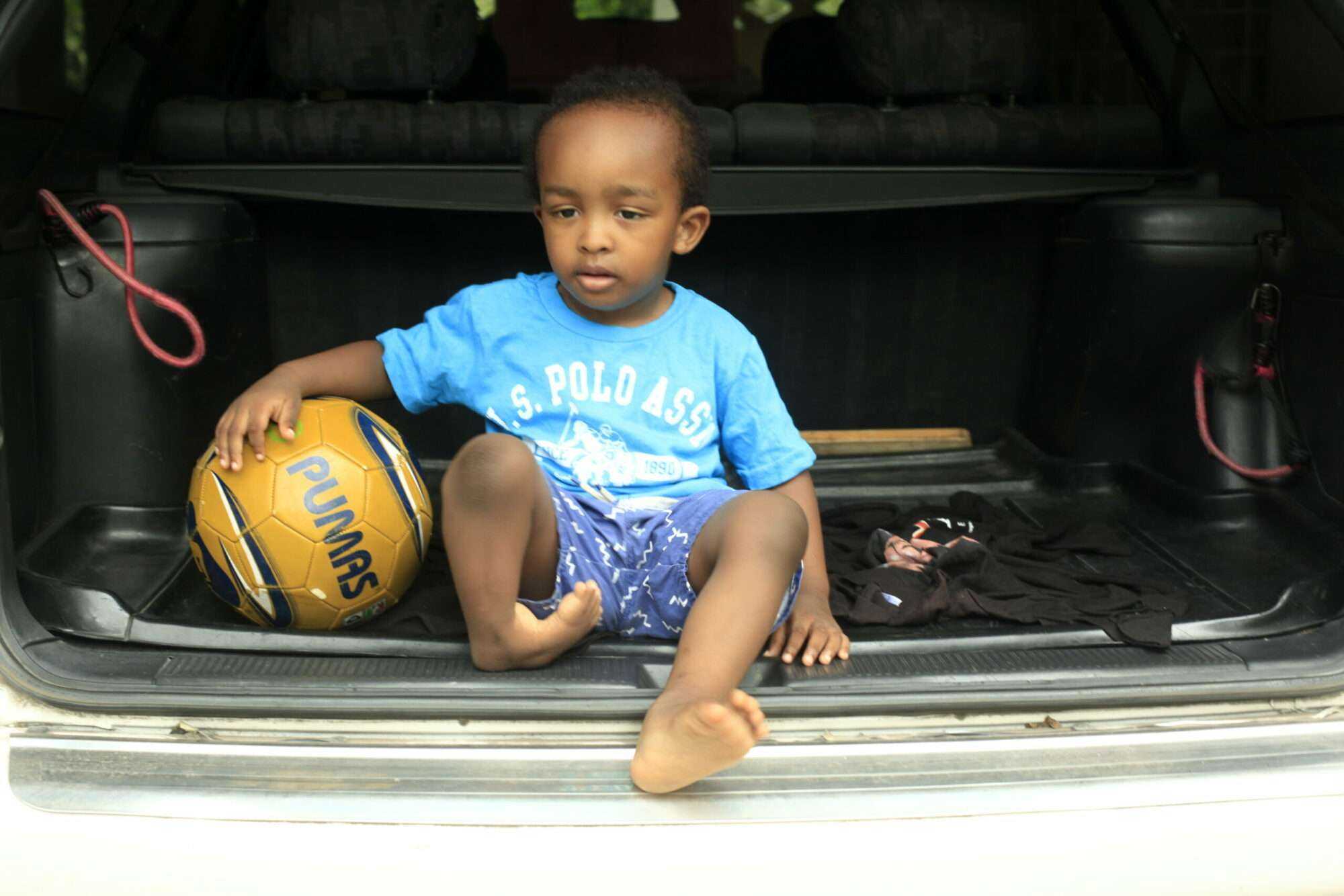BY LA SHAWNA GRIFFITH
Five-year-old Rafael Lee is an exceptional child. At a mere age of five-years-old he is already able to read, spell and solve mathematical problems.
His mother Sherika Harris described him as being a little genius at his young age.
“I do not want to say little genius, but that is what I experienced. He started reading at 18 months old. I did not know he could read. I discovered that he could read. I was actually shocked he could read. It was just one of the instances that I was amazed by him. Every day he amazes me. He started saying his times tables by the time he was two. By the time he was three he learnt his 12 times tables. It is just the little things he can do. He can do mathematics in his head. That is how I know that his brain is engaged. I discovered he had learned German by himself.”
In spite of his stellar academic achievements Rafael has a rare condition Type 2A Tibial Hemimelia (TH) which only one in a million children have.
According to paileyinstitute.org Tibial Hemimelia is described as a shortened leg with knee and ankle deformities. Most of those deformities are varus in the ankle and knee flexion contracture in the knee. There is also typically instability of these joints due to lack of collateral ligaments. The patella and quadriceps muscles may be present or absent but will have limited function if present. The tibia may also present as an alage- a fibrous remnant that does not appear on X rays. The fibula may be normal or dysplastic and is often dislocated from the knee. There are usually associated deformities of the foot as well.
Rafael was born in Jamaica at the University Hospital of the West Indies, (UWHI) Mona Jamaica. His mother Sherika Harris said when she first realized something was wrong with his right leg was after she saw him for the first time following her delivery. Dr. Clarke (who at the time was from the Department of Orthopedics at UWHI) told her that the best decision was to amputate Rafael’s leg.
“Dr. Clarke indicated to us that the condition is very rare, and most would not see it in their lifetime. Based on the advice of the consultants that he met with they recommended that we amputate his leg,”
Recounting the experience Harris got emotional as she said she had to make a decision if she should listen to the advice of orthopedic experts and amputate her newborn son’s leg.
“I was a new mother. It was my first and only child. As my son just came out how could I even think about that?”
Determined to find out if there was a way to save her only son Harris travelled to the United States of America where she was referred to the Paley Institute who told Harris that Raefel would need three major surgeries and physical therapy in order for his right leg to be fully functional.
“He told us he would need three major surgeries and physical therapy. When we got the cost that was our major concern. They said the surgery and physical therapy would cost $250,000 USD,” she said.
Harris noted that she realized that she could not possibly afford to pay the fee as both her and Rafael’s father Atai Lee do not earn enough to be able to foot the bill; it would cost them $35.7 million Jamaican Dollars.
Determined to give her son a better life Harris began to think of ways in which she could raise the money to pay for her son’s surgery. Thus, she has established a GoFundMe page and had some small fundraisers.
“The money is not coming to us, it is going straight to the hospital. What we have been doing is to gather all of the money that we have gotten from fundraising and once it meets the hospital threshold of $10,000 USD, we send it directly to the hospital. We are not keeping the money for ourselves; we are very transparent with our donors as the money is to help Rafael’s leg. We are doing everything we can to help this little boy.”
Harris said that plans are being conceptualized for another fund-raising event in 2021. Although the event is to assist with the financial costs associated with the treatment for Rafael, she also wants to use the event to sensitize Jamaicans about the disabled community.
“What we are seeking to do is to ensure that Rafael gets the help that he needs as well as spread awareness for his condition which is so rare in the disabled community. The more awareness we bring to the cause is the more we can help other persons who may be affected by it.”

